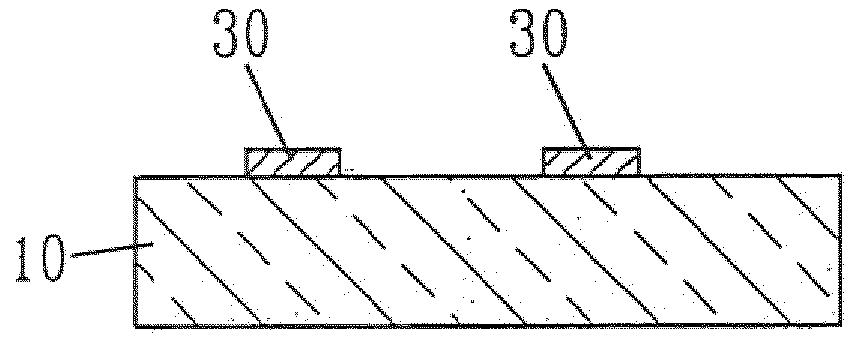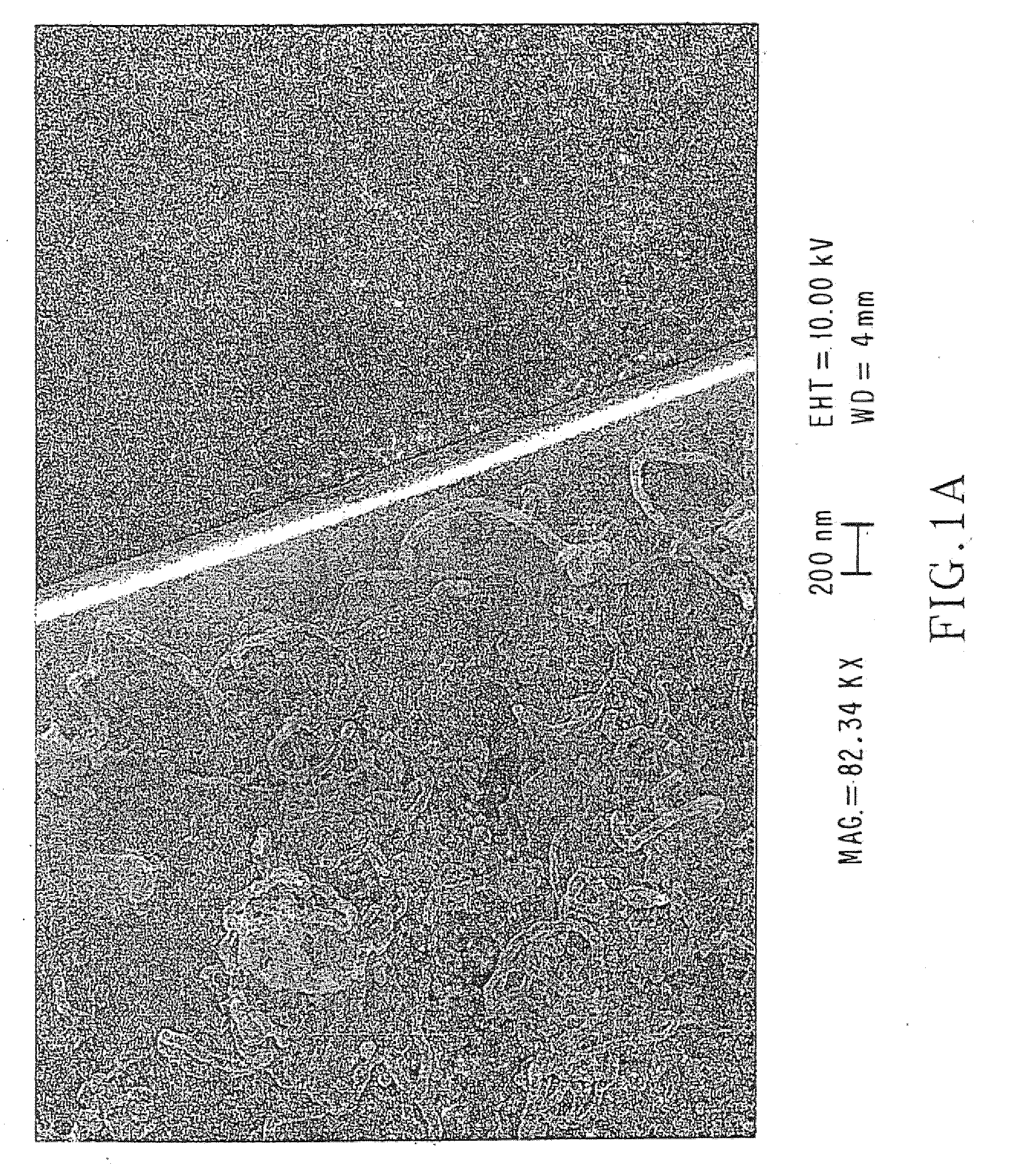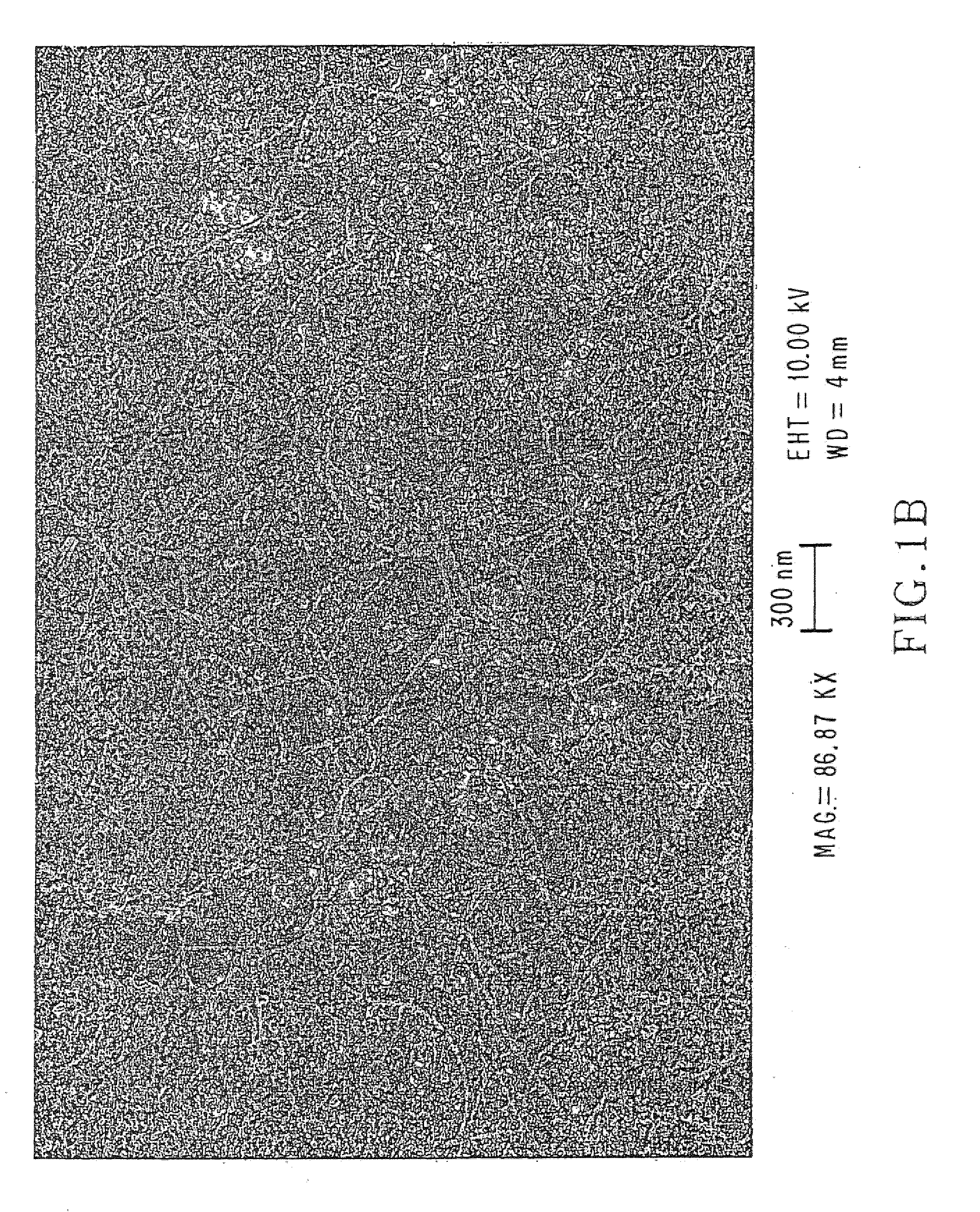Control of carbon nanotube diameter using CVD or pecvd growth
a carbon nanotube and growth technology, applied in the manufacture of electrical systems, chemically reactive gases, chemical vapor deposition coatings, etc., can solve the problems of catalyst agglomeration, complicated and difficult control of the synthesis of small catalyst particles with a narrow diameter distribution, and limit the usefulness of this technique for circuit applications
- Summary
- Abstract
- Description
- Claims
- Application Information
AI Technical Summary
Benefits of technology
Problems solved by technology
Method used
Image
Examples
example 2
[0052]This example demonstrates the effects of growth pressure on CNT diameter. A catalyst comprising a 2 nanometers thick patterned film of Fe is heated up to the growth temperature of 950° C. in a hydrogen gas ambient. FIGS. 2(a)-2(b) illustrate the effects of growth pressure on CNT diameter. FIG. 2(a) shows a scanning electron micrograph of CNTs grown at 80 torr and methane flow of 100 sccm (tr−6 min), while FIG. 2(b) shows an atomic force microscopy image of CNTs grown at 40 torr for the same methane flow rate (tr−3 min). It is evident that the lower growth pressure results in CNTs with a much smaller diameter. While the dCNT=2.5±1.5 nanometers for the growth at 40 torr, the CNT diameter is much larger (on the order of 50 nanometers) for a growth pressure of 80 torr.
[0053]From the above it is clear that the residence time can be used to control tube diameter from b).
[0054]The carbon nanotubes according to the present invention can be used in fully integrated structures using a t...
PUM
| Property | Measurement | Unit |
|---|---|---|
| diameter | aaaaa | aaaaa |
| temperature | aaaaa | aaaaa |
| size | aaaaa | aaaaa |
Abstract
Description
Claims
Application Information
 Login to View More
Login to View More - R&D
- Intellectual Property
- Life Sciences
- Materials
- Tech Scout
- Unparalleled Data Quality
- Higher Quality Content
- 60% Fewer Hallucinations
Browse by: Latest US Patents, China's latest patents, Technical Efficacy Thesaurus, Application Domain, Technology Topic, Popular Technical Reports.
© 2025 PatSnap. All rights reserved.Legal|Privacy policy|Modern Slavery Act Transparency Statement|Sitemap|About US| Contact US: help@patsnap.com



